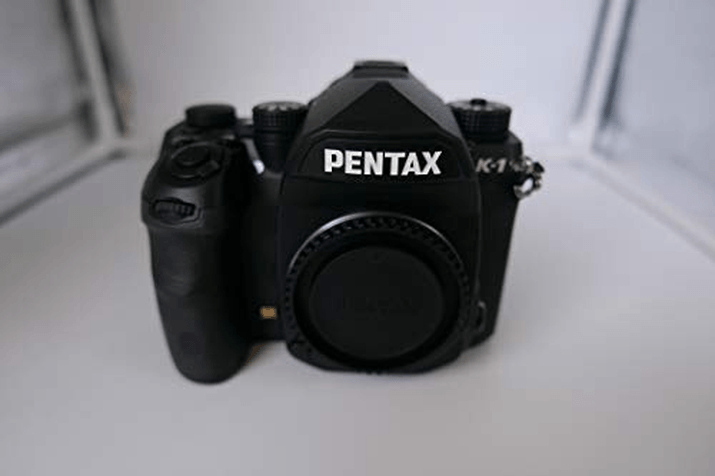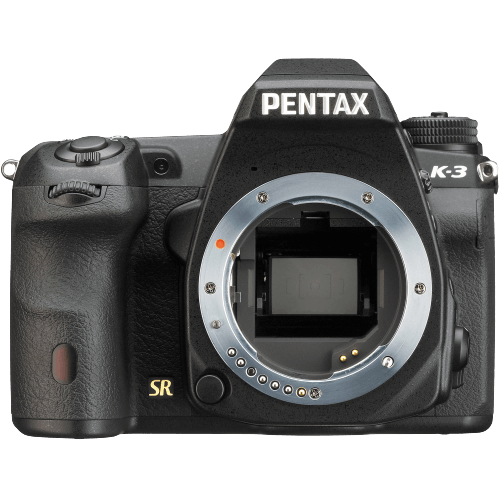Pentax K-1 vs K-3 Comparison
Pentax K-1

Pentax K-3

The Pentax K-1 takes the lead with a score of 77/100, outperforming the Pentax K-3, which has a score of 69/100. Both cameras are DSLR types, launched in 2016 and 2013 respectively. They share similarities in their launch prices, with the K-1 at $1800 and the K-3 at $1300.
The Pentax K-1 has advantages in its specifications, such as a larger camera size (137 x 110 x 86mm) and a heavier weight (1010g / 2.23lbs). This suggests that the K-1 offers more advanced features and better build quality.
On the other hand, the Pentax K-3 has its own strengths. It is more compact, with a size of 131 x 100 x 77mm, and lighter, weighing 800g / 1.76lbs. This makes it a more convenient option for those prioritizing portability.
Taking into account these differences, the Pentax K-1 is the superior camera in terms of performance and features, while the Pentax K-3 is a more suitable choice for users seeking a compact and lightweight DSLR.
Pentax K-1 vs K-3 Overview and Optics
The Pentax K-1 outperforms the Pentax K-3 in optics with a score of 85/100 compared to the K-3’s 74/100. Both cameras share some common specifications, such as the CMOS sensor type, Pentax KAF lens mount, and image stabilization. However, the K-1 has distinct advantages that contribute to its higher score.
The K-1 has a 36.4-megapixel sensor, which is significantly higher than the K-3’s 24-megapixel sensor. This difference allows the K-1 to capture more detail and produce higher resolution images. The K-1 also has a full-frame sensor size, which provides better low-light performance and a shallower depth of field than the K-3’s APS-C sensor. Furthermore, the K-1’s Prime IV processor is an upgrade over the K-3’s Prime III processor, offering better image processing capabilities. Lastly, the K-1’s DXOMARK sensor score of 96 is notably higher than the K-3’s score of 80, reflecting the K-1’s superior image quality.
On the other hand, the K-3 does have a faster shooting speed of 8.3 frames per second, compared to the K-1’s 4.4 frames per second. This makes the K-3 better suited for action and sports photography, where capturing fast-moving subjects is crucial.
Taking these factors into account, the Pentax K-1 is the clear winner in terms of optics and image quality. Its higher megapixel count, full-frame sensor, better processor, and higher DXOMARK sensor score all contribute to its superior performance. However, the Pentax K-3 may still be a viable option for those who prioritize fast shooting speeds for action photography.
Pentax K-1 vs K-3 Video Performance
The Pentax K-1 and the Pentax K-3 both have a video score of 70/100, indicating that they have similar video capabilities. They share many common specifications, making them quite comparable in terms of video performance.
Both cameras have a maximum video resolution of Full HD, with dimensions of 1920 x 1080. This ensures that they can produce clear and detailed video content. Additionally, they both have a maximum video frame rate of 60fps, which allows for smooth and fluid motion in captured videos. Time-lapse functionality is also built into both cameras, providing users with the ability to create creative and compelling time-lapse videos.
Since both cameras have the same video score and share many common specifications, it is difficult to determine a clear winner in terms of video capabilities. However, there may be other factors, such as additional features or user preferences, that could influence a buyer’s decision between the two models.
On the other hand, it is also important to consider any areas where one camera may outperform the other. In this case, both cameras share the same video capabilities, so it is unlikely that one camera is significantly better than the other in terms of video performance.
Taking all of these factors into account, it is clear that the Pentax K-1 and the Pentax K-3 are evenly matched in terms of video capabilities. With the same video score and shared specifications, users can expect similar video performance from both models. Ultimately, the choice between the two cameras will likely depend on individual preferences and other factors, such as additional features or price.
Pentax K-1 vs K-3 Features and Benefits
The Pentax K-1 and Pentax K-3 both have a feature score of 59/100, making them equal in this aspect. They share several specifications, including a 3.2-inch screen size and a screen resolution of 1,037,000 dots. Neither camera has a touchscreen.
The Pentax K-1 has some advantages over the K-3. It includes a flip screen, GPS, and WIFI capabilities. The flip screen allows for more flexibility in shooting angles, while the GPS and WIFI features make it easier to geotag photos and share them wirelessly.
On the other hand, the Pentax K-3 lacks a flip screen, GPS, and WIFI. However, it is important to note that these features may not be essential for all photographers, and the absence of these features does not necessarily make the K-3 an inferior camera. Both cameras have the same feature score, which means that they both offer a solid set of features for photographers.
The K-1’s additional features, such as the flip screen, GPS, and WIFI, make it a more versatile camera for certain types of photography and situations. The K-3, while lacking these features, still provides a strong set of specifications that make it a capable camera for various photography needs. Ultimately, the choice between the two cameras comes down to individual preferences and the specific requirements of a photographer’s workflow and shooting style.
Pentax K-1 vs K-3 Storage and Battery
The Pentax K-1 outperforms the Pentax K-3 in storage and battery with a score of 68/100 compared to the K-3’s 63/100. Both cameras share common specifications in this category, including two memory card slots, compatibility with SD/SDHC/SDXC memory cards, the use of D-LI90 battery type, and the absence of USB charging.
The K-1’s superiority in storage and battery is primarily due to its longer battery life of 760 shots, compared to the K-3’s 560 shots. This difference allows photographers to take more images before needing to change or recharge the battery, proving advantageous in various shooting situations.
On the other hand, the K-3 does not have a notable advantage over the K-1 in this category, as both cameras share similar specifications, with the exception of battery life.
Considering the longer battery life of the K-1, it is the clear winner in the storage and battery category. The Pentax K-3, although a solid camera, falls short in comparison to its counterpart, the K-1, when it comes to storage and battery performance.
Pentax K-1 vs K-3 Alternatives
Still not sure which camera is better for you? Check out these popular camera comparisons for inspiration:
